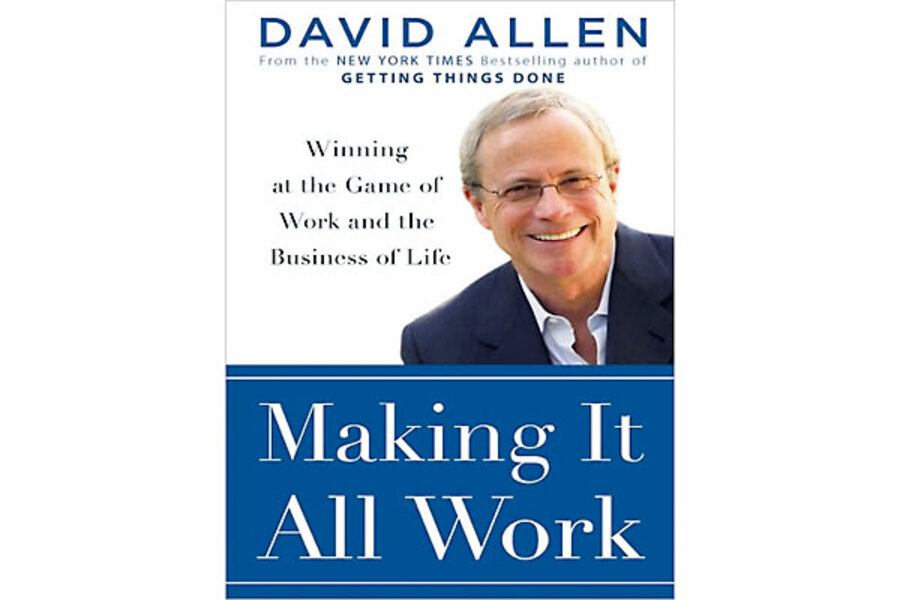Making It All Work – getting perspective at 40,000 feet: vision
Loading...
“What would long term success look, sound, and feel like?”
Again, Allen opens the chapter with a provocative question. What, to you, would success really be like? What would your life be like? What would you have achieved?
In the past, I’ve written about an exercise that I regularly do where I sketch out, in as much detail as possible, what I would like my life to look like in, say, five years. Where am I living? How do I spend my time? What are my children like? What is my relationship with my wife like?
Details, details, details.
But why so many details? The more details I have, the more clues I get as to the types of goals and projects I should be setting.
Allen actually advocates for this type of thought experiment on page 244:
For an individual, writing or crafting a script for an ideal future can serve the same purpose and have the same kind of positive effect [as a simple "what-if" scenario]. Over the years I have experienced innumerable instances in which people I have known (myself included) have simply written a lot of the things they would like to have in their ideal world – from quality of relationships, to living environments, aspects of career, health, and finances – and over time have watched them manifest.
How do you do that?
A more detailed version of this kind of future thinking can take the form of writing out a more descriptive scenario, as if composing a short story about an ideal situation coming into being. If you are particularly visual, creating “treasure maps” can function the same way. Either drawing pictures and expressive icons or cutting and pasting pictures and text from magazines onto a collage can be wonderfully freeing, creative, and deeply motivating.
On some level, this sounds a lot like the whole “positive thinking” often espoused by popular New Age gurus. This is different in one key way, though: this stuff isn’t just manifested by thinking positively about it.
Instead, as I mentioned above, this type of thinking about the future sets the foundation for a lot of projects and goals that will carry you in that direction.
As with my overall goals, I review this sketch of mine about once a quarter, roughly as often as I review my goals. Allen seems to concur with this type of regular revisiting, on page 255:
As is true with the other more elevated Horizons of Focus, revisiting this level could be done on a regular basis as part of an ongoing commitment to keeping a vision active or whenever circumstances require a consideration of the overall situation from this perspective.
I actually keep a Word document on my computer that, within it, contains a handful of detailed descriptions of what I would like my life to be like in the future. I use this document when I sit down every three months or so to review all of my goals, areas of focus, and projects, so that I know that I’m on target with where I want to be going with my life.
During my reviews, I look at that vision. Are all of the things in my life, from the big ongoing initiatives to the smaller projects to the way I spend my day, leading to this picture that I’ve developed? Is this still the big picture of what I want in my life in five years?
Usually, the only time the picture shifts significantly is when I’m taking stock of changes in my life. I’ll add another child to that picture. I’ll change my career goals based on the successes I’ve been seeing and what I feel excited about doing over the past several months. The picture slowly evolves.
What’s powerful, though, is when I see how much of the everyday activities in my life lead to this picture. The most mundane day-to-day things almost always have some connection to this picture, another step in that long, long journey. It is at this stage when I really can connect all of the little things I do to the bigger picture of my life.
It’s powerful, indeed.
Add/view comments on this post.
------------------------------
The Christian Science Monitor has assembled a diverse group of the best economy-related bloggers out there. Our guest bloggers are not employed or directed by the Monitor and the views expressed are the bloggers' own, as is responsibility for the content of their blogs. To contact us about a blogger, click here. To add or view a comment on a guest blog, please go to the blogger's own site by clicking on the link above.





